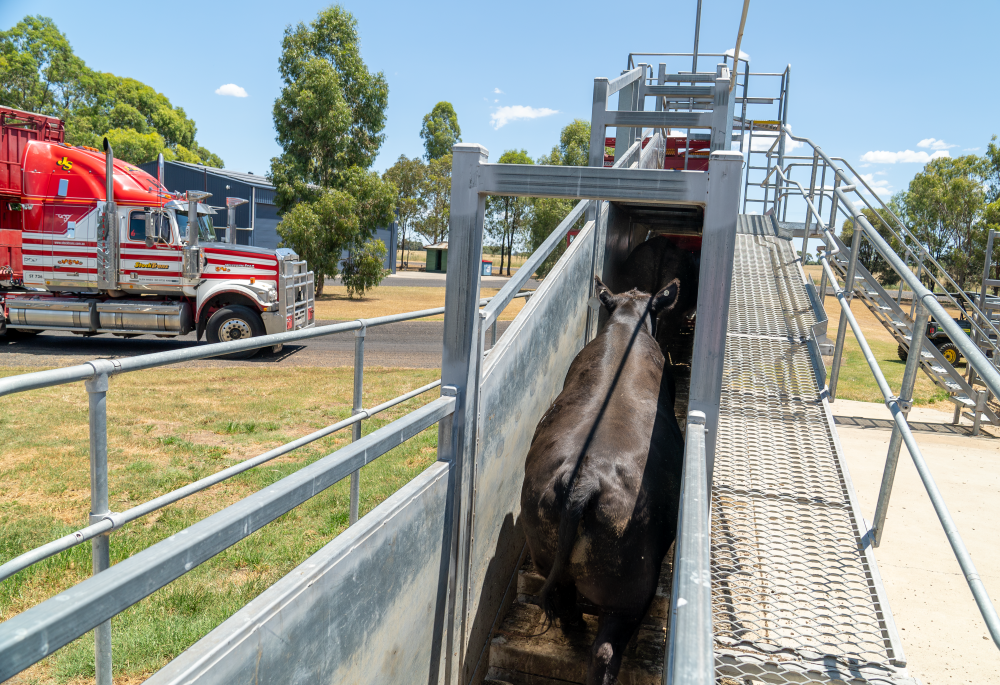The Australian Beef Market in 2025: An Absolute Cracker
In this column in July, the StoneX H2 2025 Australian Cattle & Beef Market Outlook’s bold calls were analysed and assessed for what the final 6...
2 min read
 Alex McLaughlin
:
Jul 16, 2025
Alex McLaughlin
:
Jul 16, 2025

With the second quarter of commercial cattle sales now complete, AuctionsPlus has released the latest results. In a period marked by stronger buyer sentiment and a lift in seasonal supply, we take a look at which regions were most active in listing and purchasing commercial cattle on the platform.
The second quarter of 2025 marked a notable rebound in online cattle activity, with throughput on AuctionsPlus rising sharply and clearance rates improving in tandem.
A total of 212,275 head were listed throughout the quarter, an increase of 36% on the previous period, while the national clearance rate lifted to 77%, up from 73% in Q1.

Source: AuctionsPlus
Cattle throughput on AuctionsPlus jumped notably in Q2, with 183,453 head listed, up 17.5% on the previous quarter. National clearance rates also improved, lifting to 77%, up from 73% in Q1.
A combination of solid rainfall across northern Australia and worsening drought conditions in the south prompted these quarterly changes in market sentiment.
The uptick was further supported by stronger alignment between vendor expectations and buyer appetite, setting a more confident tone as the industry enters the second half of the year.

Source: AuctionsPlus
After several quarters of steady growth, Central Western NSW surged to the top of the listings leaderboard, offering 25,216 head, more than double its Q1 volume. This 103% increase accounted for more than 12% of the national catalogue, with a clearance rate of 76%. Key delivery towns included Blayney, Bathurst and Oberon.
PTIC and station-mated heifers dominated listings from the region, particularly in the 200–280kg weight range. Angus remained the breed of choice for both vendors and buyers.
The NSW Riverina also gained ground, moving up one place to rank third. The region listed 21,777 head - up 54% from Q1- and cleared 81% of offerings.
READ MORE: 2025 Q1 Cattle Power Rankings: Who was buying and who was selling?
Southern Queensland maintained its strong position, listing 23,282 head and clearing 81%, reinforcing its role as a consistent supply region.
North Queensland recorded the most dramatic jump, climbing six positions to land in eighth. Listings rose by 226% to 11,339 head, with a clearance rate of 82%, reflecting heightened seasonal activity and restocking demand.
Conversely, the NSW Northern Tablelands and North West Slopes and Plains each fell three positions to fourth and sixth respectively, with the latter experiencing a 15% drop in listings.
In Western Queensland, ongoing impacts from Q1 flooding felt listings slip by 13%. However, the region maintained the highest clearance rate of any top-10 region at 87%, indicating solid buyer engagement amid tighter supply.

Source: AuctionsPlus
On the purchasing front, Southern Queensland continued to anchor the buyer side of the market, increasing total head purchased to 31,426 for the quarter. Angus steers weighing between 200-400kg were the most sort after. Rainfall across Southern Queensland and Northern NSW aligned closely to the quarters top bidding towns Texas, Tamworth, Quirindi, and Inverell.
Central Western NSW remained active not just as a listing powerhouse but also on the demand side, with 15,796 head purchased—reinforcing the region’s dual importance as both vendor and buyer territory.
Meanwhile, North Queensland accelerated their purchasing volumes, significantly increasing the number of cattle acquired from the previous quarter, recording 4,059 head purchased—another signal of growing confidence and seasonal restocking in the north.
Across the board, purchasing activity tracked closely with rainfall patterns and pasture availability, with restocker demand focused on lighter-weight Angus heifers and backgrounders.
Clearance rates lifted across most eastern states, particularly where listings aligned well with buyer budgets and seasonal intentions.
Central West NSW reclaimed the top spot for listings.
North Queensland recorded the biggest surge, with a 226% lift in listings and an 87% clearance rate.
Overall clearance rates improved to 77%, reflecting stronger alignment between vendor expectations and buyer demand across eastern states.
.jpg)
In this column in July, the StoneX H2 2025 Australian Cattle & Beef Market Outlook’s bold calls were analysed and assessed for what the final 6...
.png)
Each December we save the last article of the year for a bit of a crystal ball gaze, as we try to bring together market fundamentals and work out...
.png)
Australia’s wool market posted another strong performance this week, with all micron categories attracting solid support across the three selling...